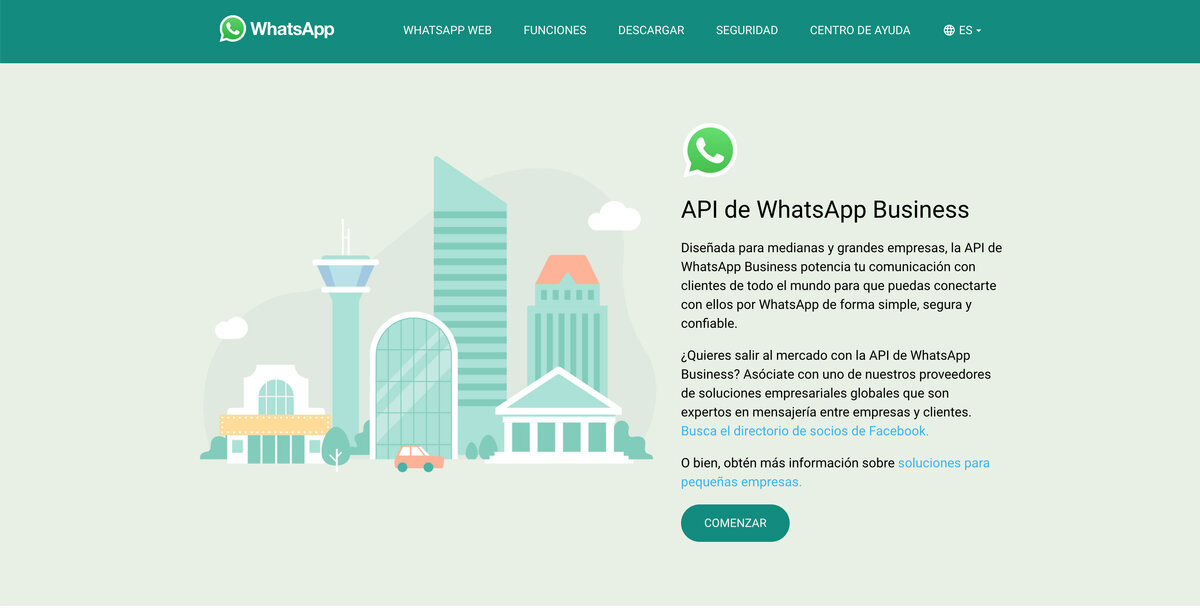
How to create a chatbot for WhatsApp in 4 steps
If the customer uses WhatsApp, we should use it too. It’s so simple, it’s almost too obvious.
This instant messaging system may not have been a professional tool originally, but you can’t gate keep, and users have incorporated it as a communication tool so transversally that companies have identified a new channel.
Throughout this article, we’ll explain how to create a chatbot for WhatsApp step by step because at Oct8ne we feel that expanding customer service tools is raising the bar in terms of the user and purchasing experience.

Why use a chatbot for WhatsApp?
The best thing about a chatbot is it lets us assist customers automatically at any time. E-commerce customers and those who use online services are used to this type of omnipresence and, increasingly, to an omnichannel approach.
One application that best fits both concepts is WhatsApp. We’re always waiting on notifications from its green icon, we send dozens of messages daily and, therefore, it’s an accessible channel where we can interact at any time of day.
It wouldn’t be efficient to have someone from the team waiting 24 hours a day, but this is why we have an automatic, conversational chat, that is the perfect complement for our customer service strategy (and for sales support).
Create a chatbot step by step
For some time now, we’ve been able to configure a conversational bot to use directly in the application (although you may need an additional tool if you want to use it without having to program it).
There are certain requirements that must be met and steps to follow, so, without further ado, let’s discuss.
#1 – Get access to WhatsApp business API
Unfortunately, the API (Application Programming Interface) connection isn’t usually available to the public. We could even say that the business version of WhatsApp is pretty restrictive when it comes to having access to the interface, which is vital when creating a chatbot.
It seems like it’s reserved for companies that WhatsApp considers to be of medium or larger size.
The section where the company is framed is also a point of influence. Surely, because of well-known problems in Facebook, the app’s parent company, with fake news, political organizations are not viewed favorably. The same thing occurs in industries that deal with quick loans, gambling, weapons, poisonous substances or adult content.
However, e-commerce, the tourism sector, real estate or educational programs are much more to WhatsApp’s liking, so your possibilities are increased significantly.
To make a request, you need to visit this page and fill out the form. It’s short and they don’t ask anything other worldly, but just sending it in doesn’t mean they’ll give you access. They study your case and will contact you later from Facebook/Meta. Keep in mind, if they do grant you access, you’ll need a developer to set up the connection.
Another faster alternative with fewer headaches is to use a service provider (BSP). The process is much simpler and, as an added bonus of being a simple intermediary, they offer tools to create your own templates and message flows. They also have test channels and other features that help immensely with implementation.
#2 – Think about the strategy
We wrote number two but it could just as well be the first point or done simultaneously. Keep in mind that behind a chatbot on WhatsApp or any other platform, you need to have a strategy for communication and tone.
On one hand, pinpoint what you want to achieve with these conversations (first point of attention, refer to an agent, capture a lead, etc) and on the other, identify the users’ needs. A chatbot is, unequivocally, a service tool and, as such, needs to provide solutions to be useful.
Dedicate as much time and effort as possible to this phase; we assure you that every minute spent will directly influence the user experience.
#3 – Create and host your bot
If you opted for a BSP, you can do it yourself. They usually have a simple interface where you can create the flows using templates and specify what answers should be given to certain questions and conditions. It’s important to remember that here you don’t have the same freedom as you do with a chatbot installed on your website because you have to adhere to Facebook/Meta’s rules for this type of communication.
If you’re developing it ad hoc, this is where your team has to get to work and start from scratch, which isn’t exactly the same as a web chatbot. For example:
- Keep in mind that if you offer several options, they won’t appear as clickable buttons, rather as a numbered list. As such, it reminds us of the automated phone system asking us to press a number to navigate through the menus.
- Links, contacts and addresses are displayed as text, rather than in a more attractive format, since WhatsApp isn’t an HTML browser.
Furthermore, it’s important to take into account those specific rules we talked about in the previous section.
We also recommend that you test it to fix any glitches or bugs before uploading it to production.
#4 – Install the WhatsApp chatbot on a phone number
Logically, the bot is always linked to a phone number so the user can interact with it. Here, there’s really only one restriction: you have to use a phone line that WhatsApp hasn’t been installed on before.
This is a simple task your developer (or you if you’re using a BSP) can do in a matter of minutes.
Are you up for creating a WhatsApp chatbot for your business? Let us know your experience!












